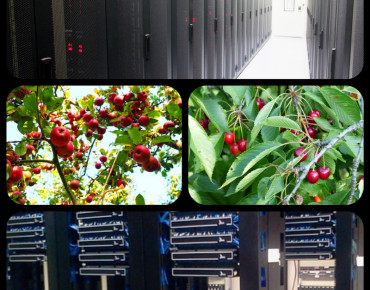Why Go Out the NSX Limb? That’s Where the Fruit Is

Gartner identified it as one of the top 10 strategic technology trends to watch in 2015. IDC estimated the market will reach $8 billion by 2018. HP found a 222 percent ROI after fully transitioning to this framework. What do these statistics refer to? The software-defined datacenter, of course.
As organizations try every old and new trick in the book to combat evolving and increasingly frequent cybersecurity threats, their thoughts may become muddled with the slew of new techniques, tools, and frameworks proposed by IT thought leaders on a seemingly daily basis. There’s no denying that cybersecurity is one of the messiest areas within any organization these days, and there is certainly no one-size-fits-all solution – and likely never will be – to solve every issue and threat brought on by the cyber-world or the criminals who occupy it.
Jimmy Carter once said, “Go out on a limb. That’s where the fruit is.” VMware has gone out on that limb, and is paving the way for other IT organizations to access the ‘fruit’ that is a more secure datacenter with its introduction of NSX. VMware is paying the necessary price to make NSX possible while proving the strategic significance in investing in this advanced virtual framework. As strong supporters of and believers in SDDC, we fully back VMware's bet and hope others follow suit sooner than later.
VMware is leading the charge with NSX by introducing the concept of micro-segmentation through virtualized networking and the hypervisor, giving large and influential companies the power to significantly decrease the cyber-risks they increasingly encounter.
Micro-segmentation of an organization’s network has several benefits when it comes to cyber-protection. However, the considerably reduced size of the potential attack surface, the ability to easily manage network security operations and infrastructures, and lower operational overhead and capital expenditure that come with it stand out most.
By segmenting your network, you are essentially creating roadblocks for an attacker by limiting the network traffic to small subsections of IT assets as opposed to giving the hacker a smooth, straight shot into the network and all the data it contains. Additionally, network security operations tend to be enormously cumbersome – complete with innumerable firewall policies to implement – and with NSX and the SDDC, IT and security executives ensure these processes all go swimmingly because of the now compressed network and control panel. By enforcing these restrictions and streamlining the network security processes, NSX can cut down on time spent carrying out these complex operations and ultimately offer organizations greater speed and agility while improving the bottom-line.
That being said, there are still extremely high stakes involved for VMware as SDDC can be considered the foundation of its vision. If there is one single thing VMware must do to prove the significance and necessity of SDDC to the industry, it is to ensure that early NSX adoptions are successful. This early implementation by those ‘going out on a limb’ is risky for not only VMware, but also for the CIOs who recognize the potential in SDDC, and especially in NSX, and have decided to act upon it. To prove to their superiors that they’ve made the right choice for their organization’s network security, they are dependent on VMware to deliver the prompt migration they have promised (and bet on themselves) and more importantly, to see ROI from this early investment.
What are these CIOs looking for? It’s crucial for the migration of mission-critical business applications to the SDDC environment be as seamless as possible with minimal interference. Simple, right? Considering most, if not all, of these business applications are designed for legacy infrastructures with the virtual environment not even close to top of mind, this transition must be extremely carefully managed.
Moving forward, enterprises will require a mix and match of physical networks, SDDC, cloud platforms, and SDN platforms. To combat and manage these complex environments, they will need to orchestrate their security policies across the entire infrastructure from a single pane of glass. With this single pane, providing a centralized viewpoint into the entire network, organizations can holistically manage the network with end-to-end visibility, and automate network connectivity and security across the entire infrastructure.
VMware and their accompanying partner ecosystem together need to reciprocate the effort and faith these early believers have in NSX by making their decisions an immense success, and to help others in the industry realize the SDDC’s game-changing potential.
About the Author:
 Reuven Harrison is CTO and co-founder of Tufin. He led all development efforts during the company’s initial fast-paced growth period, and is focused on Tufin’s product leadership. Reuven is responsible for the company’s future vision, product innovation and market strategy. Under Reuven’s leadership, Tufin’s products have received numerous technology awards and wide industry recognition.
Reuven Harrison is CTO and co-founder of Tufin. He led all development efforts during the company’s initial fast-paced growth period, and is focused on Tufin’s product leadership. Reuven is responsible for the company’s future vision, product innovation and market strategy. Under Reuven’s leadership, Tufin’s products have received numerous technology awards and wide industry recognition.
Reuven brings more than 20 years of software development experience, holding two key senior developer positions at Check Point Software, as well other key positions at Capsule Technologies and ECS. He received a Bachelor's degree in Mathematics and Philosophy from Tel Aviv University. He's on Twitter @ReuvenHarrison or @TufinTech
Related
Managing editor of Enterprise Technology. I've been covering tech and business for many years, for publications such as InformationWeek, Baseline Magazine, and Florida Today. A native Brit and longtime Yankees fan, I live with my husband, daughter, and two cats on the Space Coast in Florida.












